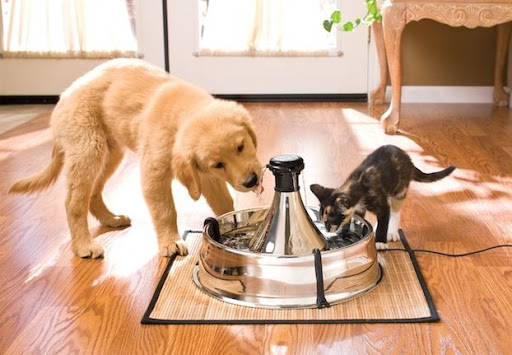For cats you usually hear FLUTD, for dogs it’s struvite crystals. UTI, bladder or kidney stones are other related issues that arise for several reasons, but diet is one you can readily control.
We are often asked about how a raw diet will affect their pet’s health, typically by affected pet owners searching for a solution to these painful, serious, and potentially deadly afflictions. It’s usually after their pet is diagnosed with one of these conditions and is directed to start feeding a prescription kibble or canned food by their vet.
FLUTD, Feline Lower Urinary Tract Disease, describes a variety of conditions that affect the bladder and urethra of cats (especially male cats). Cats usually have a low thirst drive, meaning they don’t instinctively drink lots of water (have you ever tried to get your cat to drink more?). Instead, hydration for cats happens from the food they eat. Simply adding water to their food isn’t as effective as you may assume. The best way for cats to hydrate is from intracellular moisture that comes from raw flesh. The moisture is released through the digestion process and is more thoroughly and easily absorbed. Dry diets are taxing on your cat’s digestive system, which are about 10% moisture vs around 75% for a raw diet.
When eating kibble and canned diets, cats are often in a state of mild chronic dehydration. When cats aren’t drinking enough water the urine becomes concentrated. This is a significant contributor to FLUTD, mainly stone and crystal formation. Optimal hydration also contributes to healthy kidney, digestive, joint, and cognitive functions. Repeated bouts of FLUTD can lead to other issues like bladder incontinence.
Hydration is behind a similar condition in dogs. It starts from chronic mild dehydration. Eating a diet high in dry and canned food concentrates the urine because there isn’t enough moisture intake to dilute it. Problems from concentrated urine is usually manifested in the form of struvite crystals. In addition to dehydration, struvites can be formed when your dog’s food isn’t sufficiently balanced, having a non-ideal pH balance along with high amounts of phosphorous (bone) and magnesium.
A key to these conditions is increasing the amount of water your pet consumes each day. It dilutes the urine making it less concentrated.
To work-around the low moisture content in their food, some food manufacturers use salt to trigger your pet’s thirst (and for cats, it also increases palatability). But a high intake of salt can be harmful especially if a it’s also suffering from heart, liver, or kidney disease.
You may have been told, or read, about a low protein diet contributes to FLUTD or struvite crystals. Research shows the source and quality of the protein is more important than the quantity of protein. The “low protein diet” philosophy comes from research conducted decades ago on mice, which are herbivores, being fed an unnaturally high protein diet. This caused kidney issues because mice aren’t setup to process all of the protein they were forced to ingest. These findings were then applied to dogs and cats which are carnivores.
What’s worth noting about low protein diets is they will throw the pH balance of your carnivore off. This is mainly due to fillers, grains, and plant-based protein sources. Unfortunately a low protein diets cause the urine to be alkaline which increases the likelihood of UTI and struvite formation.
A typical kibble (dry food) is 10% moisture content or less. Canned food is about 40% by means of added water, not naturally occurring in the food. Depending on the protein, Fetching Foods is between 73%-75% naturally occurring intercellular moisture because we make our foods from whole meats.
There are similarities between UTI-related crystals and gout in humans. Decreasing the amount of organ meats, increasing the hydration, and mild natural diuretics have proven to be a positive approach for FLUTD, oxalate, and struvite related issues.
You can lower the chances of your cat or dog experiencing the painful (and scary for the human) condition of FLUTD and/or Struvite Crystals by simply increasing the amount of moisture in their diet and a few other modifications. The most effective way is by changing the diet to either our Custom Meals or standard products. Our customers have reported significant changes once their food was changed to a well balanced, salt-free, human-grade quality, moisture rich food.
Ref: vetmed.ucdavis.edu/hospital/animal-health-topics/uroliths

In recent years, pet owners have become increasingly concerned about the quality and nutritional value of the food they feed their furry companions. One trend that has been gaining popularity is the use of hydrolyzed ...
Introduction As pet owners, we are constantly seeking ways to improve the health and well-being of our beloved furry companions. One aspect that has gained significant attention in recent years is the use of herbal ...
As we move through this holiday season and towards the new year, we’ve been stuffing our faces as we prepare to stuff our stockings! You might already be at the point where you are loosening ...